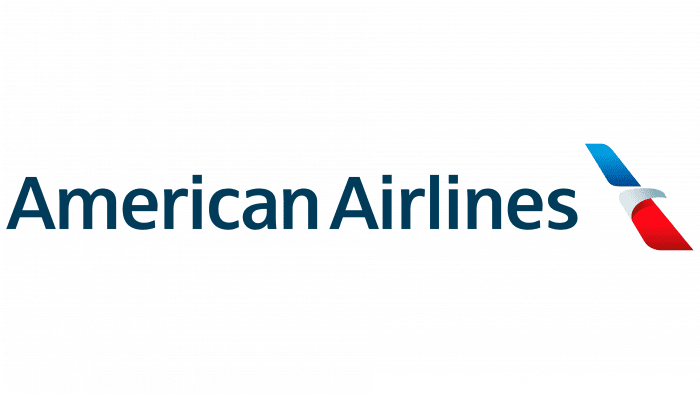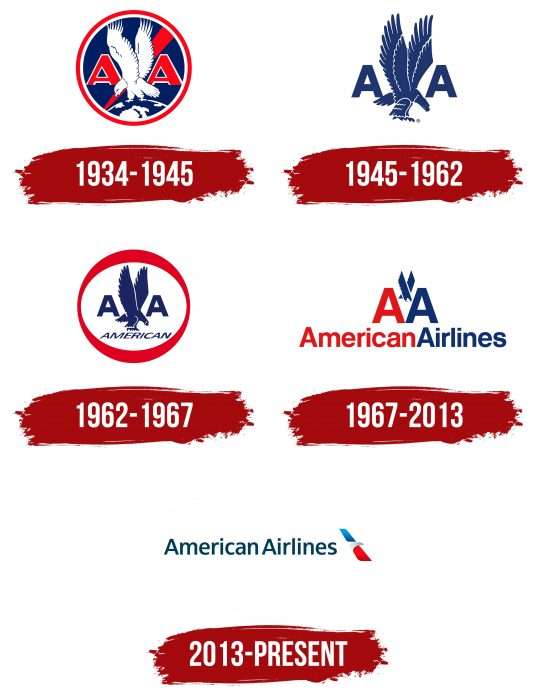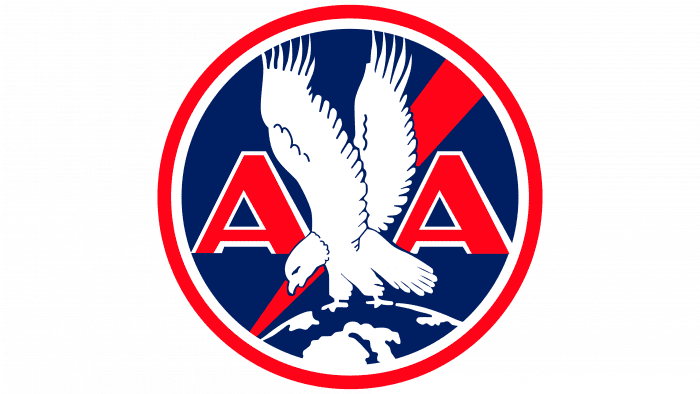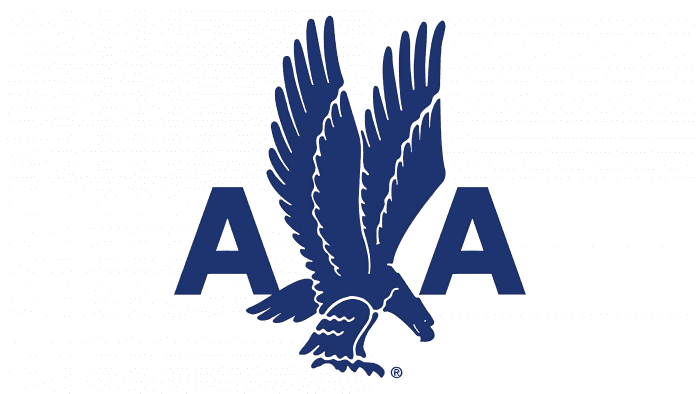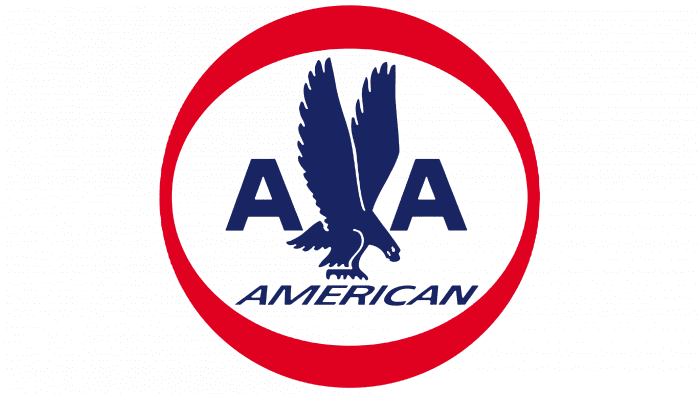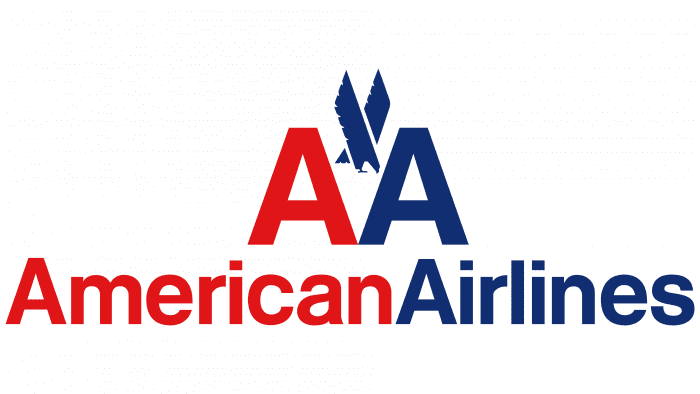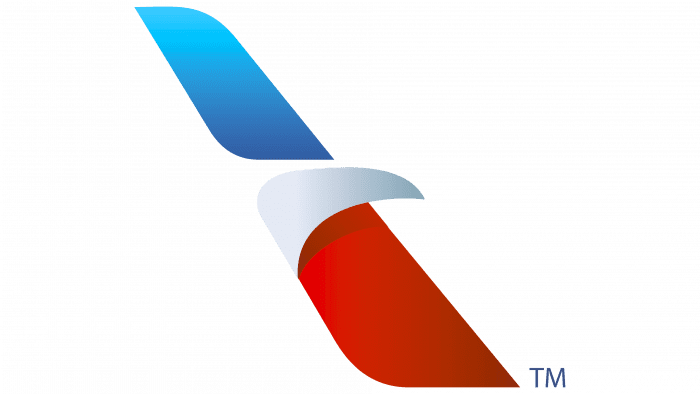The American Airlines logo has spread its wings over the world. The airline carries passengers from one continent to another, demonstrating American aircraft’s strength, speed, and reliability. The emblem promises: “Once you try it, you’ll want to fly with us forever.”
American Airlines: Brand overview
Colonial Air Transport was founded in 1926, marking the beginning of American Airlines’ existence. This little business began offering mail service between New York and Boston. Colonial Air Transport was one of the first companies on the US East Coast to enter this market when mail contracts were the main source of income for airlines in the early days of aviation.
An important development in the history of American aviation took place in 1930 when the Aviation Corporation (AVCO) was formed through the merger of eighty small airlines. The company was one of them. The US government called for the aviation sector to be streamlined to increase efficiency and safety, and this consolidation was done in response.
After AVCO was reorganized, American Airlines was formally founded as a distinct business on June 11, 1934. The new business merged the activities of other regional airlines, such as Robertson Aircraft Corporation, Southern Air Transport, and American Airways. Cyrus Rowlett Smith was the company’s first president and was instrumental in directing the organization’s growth and tactics.
American Airlines debuted the ground-breaking Douglas DC-3 aircraft in 1936. Passenger flying efficiency and comfort were greatly increased as a result. The DC-3 contributed to the increasing popularity of air travel by enabling the airline to provide quicker and more pleasant flights.
The business went public in 1939 and listed its shares on the New York Stock Exchange. This action aided in attracting more funding for business expansion and fleet modernization.
Like many other airlines, the company actively involved itself in transportation during World War II. The firm substantially contributed to the US war effort by supplying its aircraft and personnel to transport soldiers and supplies.
Aviation history was created when the airline used a Douglas DC-7 to make the first nonstop transcontinental journey from New York to Los Angeles in 1953. This accomplishment shortened the time it took to fly between the East and West Coasts, ushering in a new age in American aviation.
The Boeing 707 debuted in 1959 and was the company’s first jet aircraft. This ground-breaking modification significantly boosted flight speed and range, enabling the airline to enter the foreign market.
During the 1960s, the airline kept upgrading its fleet and adding new routes. In 1968, the business ordered the Boeing 747, its first wide-body aircraft, allowing it to carry more passengers on well-traveled routes.
The company expanded its operations in the computer technology sector in the 1970s. The business introduced the first computerized airline reservation system in history, the SABRE (Semi-Automated Business Research Environment) system, in 1972. This invention completely changed revenue management and ticket sales in the airline sector.
The airline continued to grow throughout the 1980s by acquiring other airlines. In 1987, it acquired AirCal, improving its standing on the West Coast. Around this time, one of the first and most popular frequent flyer programs, AAdvantage, was created.
The company encountered severe financial difficulties at the beginning of the 1990s due to the recession and growing fuel costs. Nonetheless, the business survived the crisis thanks to reorganization and operational improvement. The airline increased its market share abroad in 1999 when it joined Oneworld’s global airline alliance as a founding member.
The September 11, 2001, terrorist attacks had a significant negative impact on the airline industry. Terrorists took control of two of the company’s aircraft, which had a profound impact on the aviation industry and resulted in substantial reforms to aviation security.
2011 saw the airline ink contracts with Boeing and Airbus for 460 narrow-body aircraft, making it the largest aircraft order in the history of commercial aviation. Modernizing the fleet and increasing operational effectiveness were the goals of this action.
Following their 2013 merger, the company and US Airways became the biggest airlines in the world in terms of fleet size and passenger volume. After several years, the merger process was completed in 2015.
Between 2015 and 2019, the firm maintained its fleet modernization efforts by adding new aircraft models, including the Airbus A321neo and Boeing 787 Dreamliner—additionally, the airline invested in improving customer service, modernizing aircraft interiors, and broadening its menu.
The company carried out its fleet renewal program in 2020. The Boeing 757, 767, and Embraer E190 were among the older aircraft models that the business decommissioned. This choice aimed to increase operating efficiency and streamline the fleet structure.
In the same year, the airline announced an expanded agreement with Alaska Airlines to improve route connectivity on the US West Coast, further solidifying its relationship within the Oneworld alliance.
The company prioritized rebuilding its route network in 2021 due to the worldwide aviation industry crisis. The airline modified its schedule in response to shifting demand and progressively restarted flights on important routes.
The airline signed a tentative deal to purchase up to 250 electric vertical takeoff and landing (eVTOL) aircraft from Vertical Aerospace in July 2021, announcing significant investments in urban air transportation. This action demonstrated the company’s dedication to innovation and readiness for upcoming changes in urban transportation.
In 2022, the company received new aircraft, including the Boeing 787-8 Dreamliner and Airbus A321neo, as part of its ongoing fleet modernization efforts. This allowed the airline to increase the quality of its passenger service and operational efficiency.
That year, the corporation announced a new collaboration with Brazilian airline GOL, bolstering its footprint in South America. This partnership strengthened its position in the significant Latin American market.
The airline made investments to enhance its passengers’ digital offerings. The business upgraded its smartphone app, adding features like improved luggage tracking and interactive airport maps.
In 2023, the company continued to improve its operations’ sustainability. The business unveiled new efforts to cut carbon emissions, such as investments in environmentally friendly aviation fuel and more effective operational practices.
The airline changed the cabin layout of some aircraft models and added additional onboard dining options to enhance passenger comfort on long-haul trips.
To attract and retain consumers in a fiercely competitive market, the business enhanced its AAdvantage reward program by adding new opportunities to accrue and use miles.
Meaning and History
In the early years, the company created a “glamorous” image because flying on an airplane was considered exclusive, and wearing a pilot’s uniform with the AA logo was a special privilege. Now, the air carrier is perceived quite differently.
He was forced to change his logo to distract customers from other issues, including recent bankruptcy, bad reviews, and the scandalous story of a web designer fired just because he wanted to redesign American Airlines’ interface. With this in mind, the main goal of the latest rebranding was to showcase dynamic change. The company owners hoped to start again – with a new logo and a reimagined aircraft livery.
What is American Airlines?
It is the largest airline in the world. It owns a record fleet in terms of the number of aircraft. It is based in the United States and has a wide international route network. Its original name is American Airways.
1934 – 1945
In 1934, American Airways changed its name to American Airlines. Despite this, she retained her old emblem, designed back in 1931: a blue circle depicting a globe with a giant eagle standing on it. On two sides of the bird’s raised wings were the letters “A” – one to the left, the second to the right. In the background, a diagonal line ran between them. The bezel ring, beam, and both “A” were red, which created a lack of contrast.
The author of the logo is one of the airline employees, Goodrich Murphy. He came up with an original idea himself, but he spied an eagle’s image on the booklet of the Scottish hotel. The combination of colors used is an obvious reference to the US flag.
1945 – 1962
In 1945, the designers removed all elements except the letters and the eagle. Simultaneously, the logo looked completely new because the bird was enlarged and turned to the right. Although the drawing style remains the same, minor details have changed. The colors were redesigned with blue as the primary and white as the background.
1962 – 1967
In the early 1960s, the emblem developers reimagined the design, returning to the classic red, white, and blue color scheme. To do this, they again enclosed the eagle and letters in a bright ring, as they had in 1934-1945. Another change is the inscription “AMERICAN,” which appeared under the bird as a verbal clarification of the abbreviation.
1967 – 2013
In 1967, Massimo Vignelli commissioned Massimo Vignelli to develop new visual identity elements: the aircraft’s logo and livery. Until then, only two capital letters, “AA,” were depicted on the tails of airliners. The Italian designer has completed them with an abstract cruciform eagle in a “V” shape. He also created a text sign for the air transport enterprise, consisting of the merged words “AmencanAirlines.” The left half of the lettering was red, and the right half was blue. The simple Helvetica font emphasized the company’s professionalism.
2013 – today
In early 2013, design firm FutureBrand modernized the American Airlines eagle beyond recognition. The modern graphic sign, the Flight Symbol, has long been in the public domain because the United States Copyright Office considered it insufficiently original to register. The airline only acquired the copyright for its stylized bird in 2018.
Another challenge the developers faced was the enterprise’s customers’ and employees’ rejection of branding. Due to much controversy, CEO Doug Parker put two logos for a vote at the end of 2013: the Flight Symbol and a version with a messy retro design combining the old and new emblems. Naturally, choosing between these two options, many voted for the first option, which the airline’s management wanted.
American Airlines: Interesting Facts
American Airlines, founded in 1930, has become one of the world’s largest airlines, significantly shaping the aviation sector.
- Start: It began as a combination of over 80 small airlines, becoming American Airways in 1930 and then rebranding to American Airlines in 1934.
- Frequent Flyer Program: In 1981, it launched the AAdvantage program, the first major frequent flyer program, offering passengers miles for flights and other rewards.
- Reservation Technology: In the 1960s, America introduced the SABRE computerized reservation system, a major innovation that evolved into a global booking system.
- Hub-and-Spoke Model: The airline played a key role in creating the hub-and-spoke system, routing passengers through a central hub to optimize flights and aircraft usage.
- Large Fleet: With one of the largest fleets globally, American Airlines serves numerous destinations and offers extensive flight options.
- Growth Through Mergers: Notably, its 2013 merger with US Airways significantly increased its network, making it one of the largest global airlines.
- Sustainability: The airline aims for net-zero carbon emissions by 2050, investing in fuel-efficient aircraft and sustainable fuels.
- Cabin Innovations: America has introduced premium economy seats and improved in-flight entertainment and connectivity, enhancing passenger experience.
- Support in Crises: The airline has supported relief efforts in crises, transporting medical supplies and aid to disaster-struck areas.
- Embracing Digital: Americans have adopted digital solutions like mobile boarding passes and biometric boarding to improve customer service.
American Airlines has been a leader in aviation, from pioneering new systems to committing to sustainability and innovation, continuing to connect people across the globe.
Font and Colors
The main element of the American Airlines identity is the eagle, the national symbol of the United States. Now, the bird looks like a three-color diagonal stripe with a triangular projection and is very similar in shape to an airplane’s tail. According to FutureBrand’s representatives, you can see the letter “A” and a star in this sign. But they are too abstract to be obvious. Many believe that the previous version of the logo was much better. Its creator, Massimo Vignelli, shares the same opinion.
The American Airlines name is to the left of the new graphic. The designers chose a sans-serif font for the lettering, similar to Helvetica, used from 1967 to 2013.
A distinctive feature of the logo is its three-color palette, which is associated with the US flag. Shadows and gradients give the Flight Symbol visual depth.
FAQ
What is the American Airlines symbol?
The company uses an eagle as its symbol. The eagle is a key part of their brand, showing strength and freedom. It has been with the airline for a long time and covers the company’s vast network across the U.S. and other countries. This same eagle inspired the name for its regional service, American Eagle Airlines, which handles shorter flights within the U.S. and to nearby international destinations. The eagle is a popular symbol in America, seen in various company logos and national emblems, because it stands for patriotism and toughness.
What is the logo for American Airlines?
The company’s logo, known as the ‘Flight Symbol,’ combines the features of an airplane and a bird, highlighting the speed and essence of flight. It has red and blue diagonal wings, symbolizing the movement of an airplane, with a stylized eagle’s head in between, linking to the company’s long-standing use of the eagle as a symbol of strength and freedom. The colors are the same as the American flag, emphasizing the company’s role as a national carrier.
Where was American Airlines founded?
The company started as American Airways, which was created by several independent air carriers from the West, Midwest, and Northeast United States. These carriers joined forces to build a stronger and more extensive network, allowing the new airline to offer wider nationwide service coverage. This foundation was key to making it a major force in the aviation industry, eventually making it one of the top airlines in the United States known for its significant influence on national and international air travel.
Who Created the American Airlines logo?
The latest logo for the company, known as the ‘Flight Symbol,’ was designed by FutureBrand, a branding company based in London. FutureBrand is part of the Interpublic Group of Companies, an American firm focusing on advertising and marketing. The new logo is part of the company’s effort to update its brand.
This new logo was introduced with the company’s newer planes and technology. The update helps the company stay competitive and appeal to travelers worldwide with a fresh, unified look.
Did American Airlines change its logo?
Yes, the company has updated its logo several times. The latest version was launched in 2013 as part of an effort to update the airline’s image. The logo now includes a stylized eagle, which links to the airline’s history while giving it a modern look. In 2013, the company bought new aircraft and improved customer service. This update was a key step in refreshing the airline’s visual and business approach.
